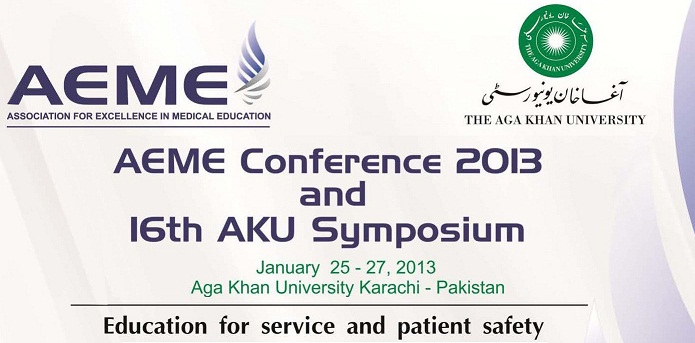Day 2 : Poster Presentations (Theme: Evaluation & Assessment)
“Photocoagulation for diabetic retinopathy – diabetes technology”
Location
Auditorium Pond Side
Start Date
27-1-2013 8:30 AM
Abstract
Photocoagulation uses light to coagulate tissue. Since the Diabetic Retinopathy Study, technology evolved from using a diffuse Xenon arc to using well-focused laser in photocoagulating retinal tissue in high risk proliferative diabetic retinopathy. Presently, laser retinal photocoagulation is a therapeutic option in several retinal and eye conditions.
AIMS: To review the treatment of diabetic retinopathy by Photocoagulation according to the Early Treatment Diabetic Retinopathy Study (EDTRS) Research Group.
Introduction: Tight glucose and blood pressure control are critical systemic factors in controlling the progression of diabetic retinopathy. Ocular complications of diabetes are addressed directly through treatment with laser photocoagulation or surgery.
Inclusion criteria: For Non Proliferative Diabetic Retinopathy (NRDR):
Inclusion criteria for this study were based on the presence of “clinically significant” macular edema threatening the macula.
For Proliferative Diabetic Retinopathy (RDR):
The EDTRS evaluated the effects of scatter photocoagulation in patients with PDR or severe NPDR. Patients had one eye randomized to treatment and one eye to observation.
Methods:
Laser Photocoagulation for NPDR:
Diabetic macular edema is believed to result from fluid and lipid transudation from microaneurysms and telangiectatic capillaries. Focal laser photocoagulation is used to heat and close the microaneurysms, causing them to stop leaking. Macular edema often improves following this form of treatment. Some clinicians apply laser burns in a grid pattern overlying areas of retinal edema without directing treatment to specific microaneurysms; this method can also be effective in reducing retinal thickening.
Laser Photocoagulation for PDR:
Scatter laser photocoagulation, also known as panretinal photocoagulation (PRP), is an important treatment modality for PDR and severe NPDR. Laser spots are placed from outside the major vascular arcades to the equator of the eye, with burns spaced approximately 1/2 to 1 burn width apart. Although the treatment destroys normal retina, the central vision is unaffected since all spots are placed outside the macula.
Results: In the ETDRS study for NPDR, only a very small percentage of eyes improved with focal laser treatment, highlighting the fact that the goal of treatment is not to improve vision, but rather to stabilize it and prevent worsening.
In the ETDRS study for NPR, treatment was shown to reduce severe visual loss by 50%. The ETDRS also found a positive risk-benefit ratio for early scatter treatment in patients with severe NPDR or early PDR.
Conclusion: Scatter photocoagulation is not recommended for eyes with mild or moderate non-proliferative diabetic retinopathy. When retinopathy is more severe, scatter photocoagulation should be considered and usually should not be delayed if the eye has reached the high-risk proliferative stage. The ETDRS results demonstrate that, for eyes with macular edema, focal photocoagulation is effective in reducing the risk of moderate visual loss but that scatter photocoagulation is not. Focal treatment should be considered for eyes with macular edema that involves or threatens the center of the macula.
“Photocoagulation for diabetic retinopathy – diabetes technology”
Auditorium Pond Side
Photocoagulation uses light to coagulate tissue. Since the Diabetic Retinopathy Study, technology evolved from using a diffuse Xenon arc to using well-focused laser in photocoagulating retinal tissue in high risk proliferative diabetic retinopathy. Presently, laser retinal photocoagulation is a therapeutic option in several retinal and eye conditions.
AIMS: To review the treatment of diabetic retinopathy by Photocoagulation according to the Early Treatment Diabetic Retinopathy Study (EDTRS) Research Group.
Introduction: Tight glucose and blood pressure control are critical systemic factors in controlling the progression of diabetic retinopathy. Ocular complications of diabetes are addressed directly through treatment with laser photocoagulation or surgery.
Inclusion criteria: For Non Proliferative Diabetic Retinopathy (NRDR):
Inclusion criteria for this study were based on the presence of “clinically significant” macular edema threatening the macula.
For Proliferative Diabetic Retinopathy (RDR):
The EDTRS evaluated the effects of scatter photocoagulation in patients with PDR or severe NPDR. Patients had one eye randomized to treatment and one eye to observation.
Methods:
Laser Photocoagulation for NPDR:
Diabetic macular edema is believed to result from fluid and lipid transudation from microaneurysms and telangiectatic capillaries. Focal laser photocoagulation is used to heat and close the microaneurysms, causing them to stop leaking. Macular edema often improves following this form of treatment. Some clinicians apply laser burns in a grid pattern overlying areas of retinal edema without directing treatment to specific microaneurysms; this method can also be effective in reducing retinal thickening.
Laser Photocoagulation for PDR:
Scatter laser photocoagulation, also known as panretinal photocoagulation (PRP), is an important treatment modality for PDR and severe NPDR. Laser spots are placed from outside the major vascular arcades to the equator of the eye, with burns spaced approximately 1/2 to 1 burn width apart. Although the treatment destroys normal retina, the central vision is unaffected since all spots are placed outside the macula.
Results: In the ETDRS study for NPDR, only a very small percentage of eyes improved with focal laser treatment, highlighting the fact that the goal of treatment is not to improve vision, but rather to stabilize it and prevent worsening.
In the ETDRS study for NPR, treatment was shown to reduce severe visual loss by 50%. The ETDRS also found a positive risk-benefit ratio for early scatter treatment in patients with severe NPDR or early PDR.
Conclusion: Scatter photocoagulation is not recommended for eyes with mild or moderate non-proliferative diabetic retinopathy. When retinopathy is more severe, scatter photocoagulation should be considered and usually should not be delayed if the eye has reached the high-risk proliferative stage. The ETDRS results demonstrate that, for eyes with macular edema, focal photocoagulation is effective in reducing the risk of moderate visual loss but that scatter photocoagulation is not. Focal treatment should be considered for eyes with macular edema that involves or threatens the center of the macula.

